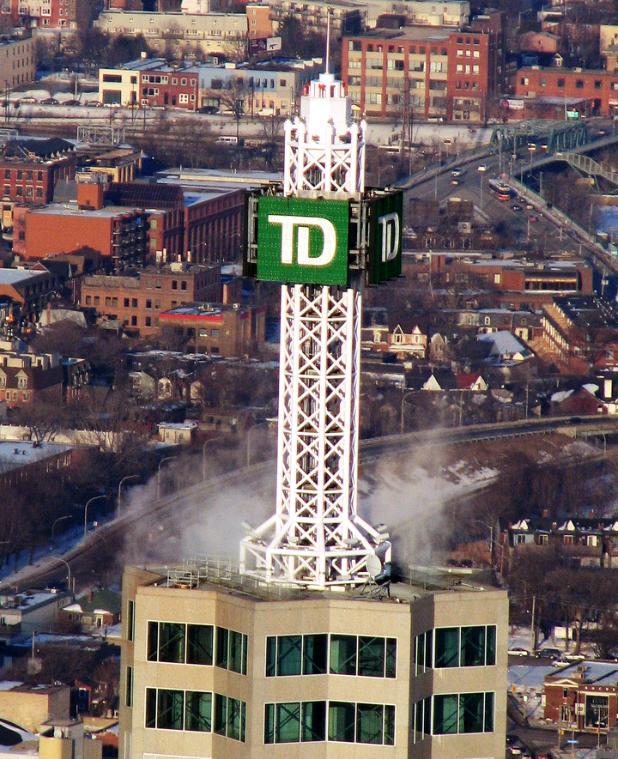 TD has become the first Big 6 bank to lower its posted 5-year fixed rate since July 2019.
TD has become the first Big 6 bank to lower its posted 5-year fixed rate since July 2019.
The move comes amid plunging bond yields and just 11 days after the banking regulator (OSFI) essentially blamed banks for keeping posted rates too high. By doing so, banks have inflated the federal mortgage qualifying rate, making it unnecessarily difficult for borrowers to pass the “stress test” and get a mortgage.
In a speech on January 24, OSFI threatened to decouple the stress test rate from the Big 6 banks’ posted rates, saying that posted rates are “not playing the role that we intended.”
What TD Did
 The country’s second-largest bank is first out of the gate after OSFI’s comments. This morning it chopped its 5-year posted rate by 35 bps, to 4.99%. The bank’s last 5-year posted rate cut was way back in March 2019.
The country’s second-largest bank is first out of the gate after OSFI’s comments. This morning it chopped its 5-year posted rate by 35 bps, to 4.99%. The bank’s last 5-year posted rate cut was way back in March 2019.
“Based on current market conditions, lower funding costs have led to a growing variance in customer rates versus posted rates,” said a TD spokesperson. “This rate decrease aligns TD’s 5-year fixed posted rate more closely with current customer rates.”
Based on the level of bond yields and historical spreads, posted 5-year rates should be even lower—at least 20 bps lower, but this is a start.
The bank also cut a number of its discounted fixed rates. For well-qualified borrowers, we’re hearing its unpublished discretionary 5-year fixed rate is now closer to 2.89% or less.
Stress Test Implications
5-year posted rates are relics for the most part, given few people pay them. But they have a meaningful impact on the housing market.
For one thing, they’re the basis for big-bank mortgage penalty calculations. For another, they’re the basis of the minimum qualifying rate (also known as the “benchmark qualifying rate” or “stress test rate”).
For the current stress test rate to fall, a few more banks have to change their posted rates as well. Here are the latest big bank posted rates.
If a couple more matched TD’s 4.99%, it would be the first time in over two years (since January 2018) that the benchmark rate was under 5.00%.
That, in turn, would:
- lower the stress test rate floor by 20 bps (from 5.19% to 4.99%)
- require roughly 1.8% less income to qualify for a mortgage on the average Canadian home (assuming 20% down)
- increase buying power by almost 2%
These effects may seem small at the margin, but they’re magnified when you’re talking about thousands of buyers across Canada.
A lower stress test rate would also help refinancers qualify for bigger loans. Someone with an average home making $100,000 a year would qualify for a $9,000 bigger mortgage (+/-) if the stress test rate dropped to 4.99% from 5.19%.
On top of all that, a lower qualifying rate would give another boost to housing market psychology. That could potentially boost demand and push home prices incrementally higher.
There are already multiple housing regions in sellers’ markets and it’s not even the spring market yet. The latest data from CREA shows that the national average home price surged 9.6% year-over-year in December. A lower stress test rate would make a busy spring housing market even busier.

 log in
log in
7 Comments
I’ve been shopping for a mortgage and have already run up against problems because of the stress test. I understand wanting to ensure borrowers are able to handle higher payments, but 5.19%!?! What chain of events would have to happen for rates to rise that much over the next few years?
Fingers crossed that rate starts to come down now that TD has made the first move!
Maybe the corona flu will be the next plague, wiping out half the population and leading Canada to default on its debt. Apart from that, I can’t think of anything else that would take “A” mortgage rates above 4%.
My guess is the qualifying rate will fall to 4.99% in a matter of weeks. It’s a start, but nowhere near where it should be
I’ll put my money on RBC dropping next.
$10 on Scotia! haha
Given that OSFI’s qualifying rate is essentially based on the median posted rate from the big banks, and given the strong relationship between rate changes / expectations and homebuying decisions, the next big bank rate drop could very well start a buying spree. Has OSFI effectively given the big banks the starter’s pistol for the spring homebuying season?
I doubt OSFI would loosen the stress test by much. They might tweak the stress test floor rate but you would still have to qualify at your actual rate + 2%.